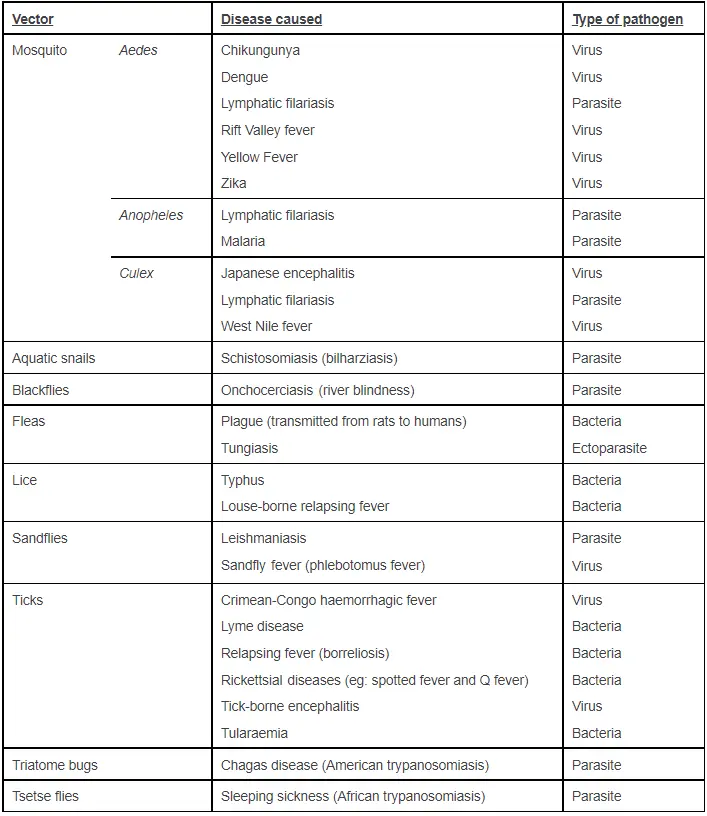The nutritive value of a food refers to the amount of nutrients it contains. Let us first understand what is nutrition, then we will discuss the nutritive values of cereals, millet, and pulses. Nutrition is the study of food and how it affects the body.
WHO’s Definition of Nutrition
According to the World Health Organization (WHO), nutrition is “the intake of food, considered in relation to the body’s dietary needs”. Good nutrition is essential for the promotion of good health and the prevention of chronic diseases. It involves the consumption of a varied and balanced diet that provides the body with the necessary nutrients it needs to function properly. These nutrients include carbohydrates, proteins, fats, vitamins, minerals, and water.
The WHO recommends that people consume a healthy diet that is rich in fruits, vegetables, whole grains, legumes, and nuts, and that is low in salt, sugar, and unhealthy fats. This type of diet can help to prevent chronic diseases such as obesity, cardiovascular disease, type 2 diabetes, and some types of cancer. It is also important to consume the recommended amounts of these nutrients to ensure that the body has sufficient energy and resources to function properly.
How Nutritive Value Works
The nutritive value of a food refers to the amount of nutrients it contains. Nutrients are substances in food that provide energy and support the body’s growth, maintenance, and repair. They include macronutrients (such as carbohydrates, proteins, and fats) and micronutrients (such as vitamins and minerals).
The specific nutritive value of a food depends on its composition and serving size. For example, a serving of chicken breast will have a different nutritive value than a serving of broccoli. The nutritive value of a food can be expressed in terms of the percentage of daily recommended intake (DRI) of each nutrient it provides. For example, a food that contains 10% of the DRI for protein per serving would be considered a good source of protein.
Why Nutritive Value in the Food is Important?
Good nutrition is essential for good health. Consuming a varied and balanced diet that provides the body with the necessary nutrients it needs to function properly can help to promote good health and prevent chronic diseases such as obesity, cardiovascular disease, type 2 diabetes, and some types of cancer.
It is important to consume the recommended amounts of nutrients to ensure that the body has sufficient energy and resources to function properly. This includes consuming the recommended amounts of macronutrients and micronutrients, as well as getting enough fluids and consuming enough calories to meet the body’s energy needs.
In summary, the nutritive value of food is important because it provides the body with the nutrients it needs to function properly and maintain good health.
WHO Nutrition chart
The World Health Organization (WHO) has developed several guidelines and recommendations for good nutrition. These guidelines are based on the latest scientific evidence and are designed to help people make informed decisions about the foods they eat.
- Good nutrition is essential for good health.
- A healthy diet includes a variety of foods from all food groups.
- Fruits and vegetables should be consumed in abundance.
- Whole grains, legumes, and nuts should be consumed regularly.
- Salt, sugar, and unhealthy fats should be consumed in moderation.
- Breastfeeding is important for the health of both mothers and children.
- Malnutrition can have serious consequences, including stunting, wasting, and overweight.
- Poor nutrition can lead to chronic diseases such as obesity, cardiovascular disease, type 2 diabetes, and some types of cancer.
- Good nutrition is important throughout life, from before birth to old age.
- Good nutrition requires an adequate and varied diet, clean water, and adequate sanitation.
What Is The Nutritive Value of wheat?
Nutritive value of cereals (values per 100 g.) (K.Park)
| Raw Rice milled | Wheat Whole | Maize Dry | |
| Protein (g) | 6.8 | 11.81 | 11.1 |
| Fat (g) | 0.5 | 1.5 | 3.6 |
| Carbohydrate (g) | 78.2 | 71.2 | 66.2 |
| Thiamine (mg) | 0.06 | 0.45 | 0.42 |
| Niacin (mg) | 1.9 | 5.0 | 1.8 |
| Riboflavin (mg) | 0.06 | 0.17 | 0.1 |
| Minerals (g) | 0.6 | 1.5 | 1.5 |
| Energy (kcal) | 345 | 346 | 342 |
When not polished, rice is reach the source of the B group of vitamins.
parboiling also known as the hot soaking process, is done to preserve the nutritive quality of rice, and to prevent a thiamine deficiency disease, known as dry and wet beriberi.
What Is The Nutritive Value of Millets?
Millets are a group of small-seeded grasses that are widely cultivated and consumed as a staple food in many parts of the world, particularly in Africa, Asia, and parts of Europe. There are several types of millet, including pearl millet, foxtail millet, proso millet, and finger millet.
Nutritive value of millets (values per 100 g K.Park)
| Jowar | Bajra | Ragi | |
| Protein (g) | 10.4 | 11.6 | 7.3 |
| Fat (g) | 1.9 | 5.0 | 1.3 |
| Carbohydrate (g) | 72.6 | 67.5 | 72.0 |
| Minerals (g) | 1.6 | 2.3 | 2.7 |
| Calcium (mg) | 25.0 | 42.0 | 344.0 |
| Iron (mg) | 4.1 | 8.0 | 3.9 |
| Thiamine (mg) | 0.3 | 0.3 | 0.2 |
| Riboflavin (mg) | 1.3 | 0.25 | 0.18 |
| Niacin (mg) | 3.1 | 2.3 | 2.3 |
| Energy (kcal) | 349 | 361 | 328 |
Jowar is an amazing source of iron and copper that are helpful in increasing the functioning of the circulatory system.
The gluten-free grain is low in calories but packed with healthy nutrients that may contribute to weight loss, improved blood sugar levels, and other health benefits.
Like most millets, Bajra is a nutrient-dense source of protein, carbs, vitamins, and minerals especially 8 mg of iron per 100 grams.
Ragi has been found to have between 5-30 times the calcium content found in other cereals. It is also rich in phosphorus, potassium, and iron.
What Is The Nutritive Value of Pulses?
Nutritive value of pulses {values per 100 g)
| Pulses | Energy (kcal) | Protein (g) | Fat (g) | Calcium (mg) | Iron (mg) | Thiamine (mg) | Riboflavin (mg) | Niacin (mg) | Vit-C (mg) |
| Bengal gram | 360 | 17.1 | 5.3 | 202 | 4.6 | 0.30 | 0.15 | 2.9 | 3 |
| Black gram | 347 | 24.0 | 1.4 | 154 | 3.8 | 0.42 | 0.20 | 2.0 | 0 |
| Red gram | 335 | 22.3 | 1.7 | 73 | 2.7 | 0.45 | 0.19 | 2.9 | 0 |
| Soybean | 432 | 43.2 | 19.7 | 240 | 10.4 | 0.73 | 0.39 | 3.2 | 0 |
| Green gram | 348 | 24.5 | 1.2 | 75 | 3.9 | 0.47 | 0.21 | 2.4 | 0 |
| Peas dry | 315 | 19.7 | 1.1 | 75 | 7.05 | 0.47 | 0.19 | 3.4 | 0 |
| Horse gram | 321 | 22.0 | 0.5 | 287 | 6.77 | 0.42 | 0.2 | 1.5 | 1 |
It is also known as poor man’s meat as it is affordable by rich and poor alike.
compared to cereals, pulses contain 3 times more protein than rice and 2 times more than wheat. Although deficient in methionine and threonine, when germinated, it becomes rich in vitamins including vitamin C.
Did you know? Soybeans have been called “meat without bones” because, although this versatile bean is small in comparison to many other beans, it is packed with protein, very similar to the protein in meat, dairy products, and eggs.
In Gujarati there is a saying:
જે ખાય ચણા, એ જીવે ઘણા !
જે ખાય અડદ એનુ મટે બધુ દરદ !
જે ખાય મગ, એના ચાલે પગ !
Peas are a good source of vitamin A, vitamin C, folate, thiamine (B1), iron, and phosphorus. They are also rich in protein, carbohydrates and fiber and low in fat. A 100 calories serving of peas contains more protein than a whole egg or tablespoon of peanut butter.
The Supplementary Action of Proteins
Now we know that cereals are deficient in lycine and threonine, and pulses in methionine and tryptophan. But they are complementary in limiting essential amino acid composition, for example, a limiting essential amino acid in one protein is present in excess amounts in another protein and vice versa. So they supplement each other and make good quality protein in diet. This is known as the supplementary action of proteins
You Can Practice Common Nutritional Deficiency Disorders through this Interactive content:
What Nutritive value of Salad and Dressing
The nutritive value of the dressing will depend on the specific ingredients used. Some dressings, such as those made with oil and vinegar, can be relatively low in calories and fat but may not provide many other nutrients. Other dressings, such as those made with nuts, seeds, or avocado, can be higher in calories and fat but may also provide a good source of healthy fats and other nutrients.
Does Food Lose Nutritional Value When Refrigerated
Some foods may lose some of their nutritional value when they are refrigerated, but this can depend on a variety of factors, including the type of food, how it is stored, and how long it has been refrigerated.
Which food?
Some foods, such as fruits and vegetables, can lose some of their nutrients when they are refrigerated, particularly if they are not stored properly. For example, certain vitamins, such as vitamin C and some B vitamins, can be sensitive to light and heat and may be lost when foods are stored at cold temperatures for extended periods of time.
It is good also!
On the other hand, refrigeration can also help to preserve the nutritional value of some foods. For example, refrigeration can slow down the process of spoilage, which can help to preserve the nutrients in foods such as meat, dairy products, and eggs.
Store it properly
It is important to store foods properly in the refrigerator to help preserve their nutritional value. This includes wrapping or covering foods to protect them from light and air and using airtight containers to prevent moisture loss. It is also important to consume refrigerated foods as soon as possible to ensure that they are at their freshest and most nutritious.
Does Boiling Decrease Nutritional Value?
Boiling can cause some foods to lose some of their nutritional value, particularly water-soluble vitamins such as vitamin C and some B vitamins. These vitamins can leach out of the food and into the cooking water during the boiling process.
Factors
However, the extent to which boiling decreases the nutritional value of food will depend on several factors, including the specific food being cooked, the cooking method, and the length of the cooking time. For example, boiling foods for a shorter period of time may result in fewer nutrients being lost compared to boiling them for a longer period of time.
Some methods of cooking, such as steaming or baking, may be less likely to cause the loss of nutrients compared to boiling. However, it is important to note that all cooking methods can affect the nutritive value of foods to some extent.
To maximize the nutritional value of the foods you eat, it is important to choose a variety of foods and to prepare them in a way that minimizes the loss of nutrients. This may include using cooking methods that preserve nutrients, such as steaming or baking and avoiding overcooking. It is also important to consume a varied and balanced diet that includes a variety of foods to ensure that you are getting all of the nutrients you need.
Take a Quiz & Test Your Knowledge on Vitamins asked in Various Competitive Exams:
FAQs
What is the role of nutrition in maintaining good health?
Nutrition plays a critical role in maintaining good health. A well-balanced diet can help provide the body with the necessary nutrients and energy to function properly, while also reducing the risk of chronic diseases such as heart disease, diabetes, and cancer.
How can I ensure that I am getting the right balance of nutrients in my diet?
Eating a variety of nutrient-dense foods is the key to ensuring that you are getting the right balance of nutrients in your diet. This includes consuming a variety of fruits and vegetables, lean proteins, whole grains, and healthy fats. Additionally, it is important to limit or avoid foods that are high in added sugars, saturated fats, and sodium.
What are some common nutrient deficiencies?
Common nutrient deficiencies include deficiencies in iron, vitamin D, and vitamin B12. These deficiencies can lead to a variety of health problems, including anemia, bone weakness, and neurological problems.
Can supplements be used to make up for nutrient deficiencies?
Supplements can be used to make up for nutrient deficiencies, but it is generally best to get the necessary nutrients from food. However, certain populations such as pregnant women, older adults, vegetarians and vegans may require supplements. It is important to speak with a healthcare provider before taking any supplements to determine if they are necessary and what the appropriate dosage should be.
How does diet affect chronic diseases such as heart disease and diabetes?
A diet that is high in saturated fats, added sugars, and sodium can contribute to the development of chronic diseases such as heart disease and diabetes. Conversely, a diet that is rich in fruits, vegetables, lean proteins, and whole grains can help reduce the risk of these conditions.
Can specific foods or food groups help prevent or manage certain health conditions?
Some foods or food groups have been shown to be particularly beneficial for preventing or managing certain health conditions. For example, consuming fish high in omega-3 fatty acids may help reduce the risk of heart disease, while a diet rich in fruits and vegetables may help lower the risk of certain types of cancer.
How can I make sure that I am getting the right amount of calories?
The right amount of calories will depend on your age, gender, height, weight, and level of physical activity. It is important to work with a healthcare provider or a registered dietitian to determine the appropriate calorie intake for your individual needs.
What should I do if I suspect that I have a food allergy or intolerance?
If you suspect that you have a food allergy or intolerance, it is important to speak with a healthcare provider to determine the cause and appropriate course of action. This may include avoiding certain foods, taking medication, or receiving specialized testing.













